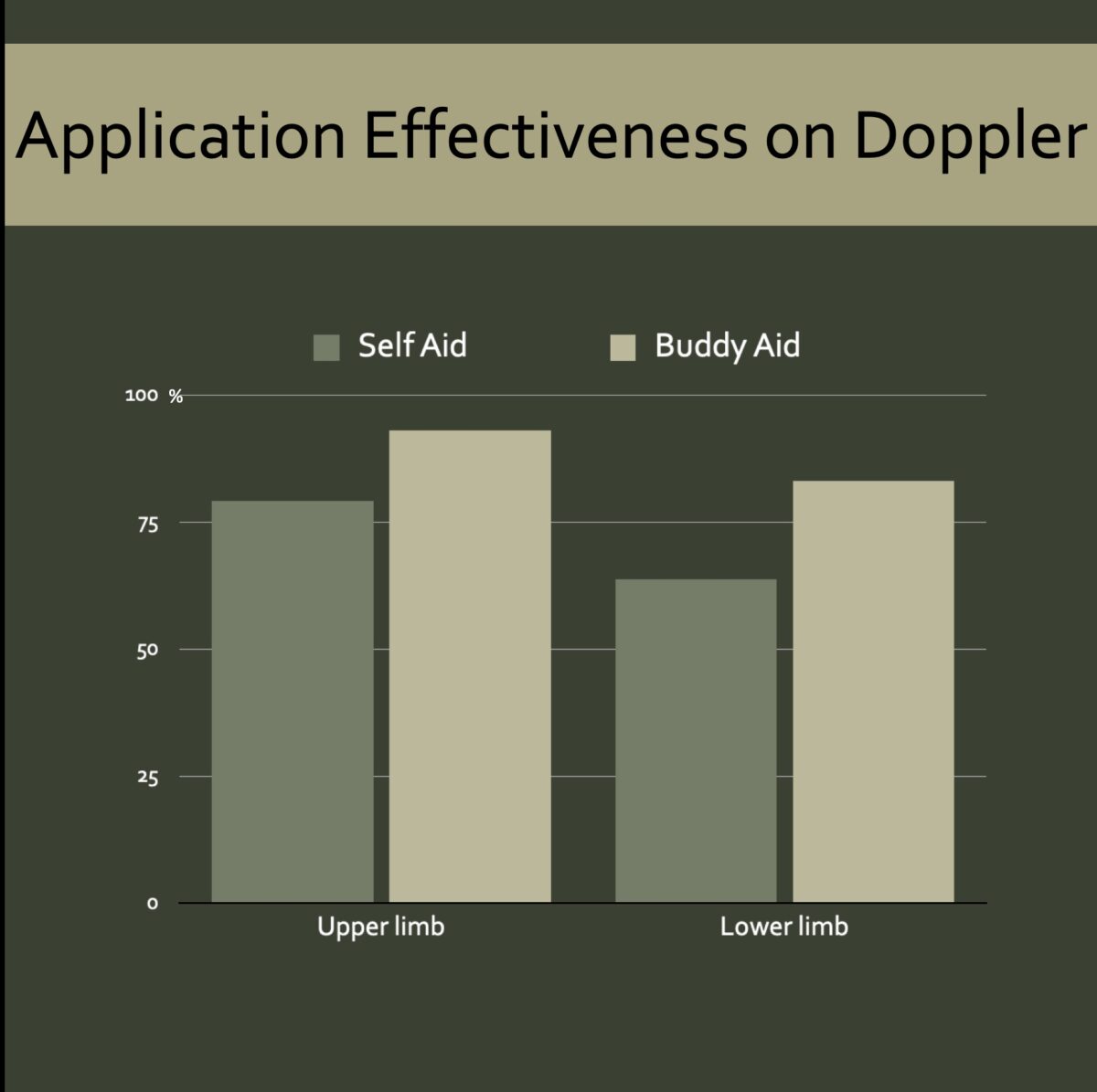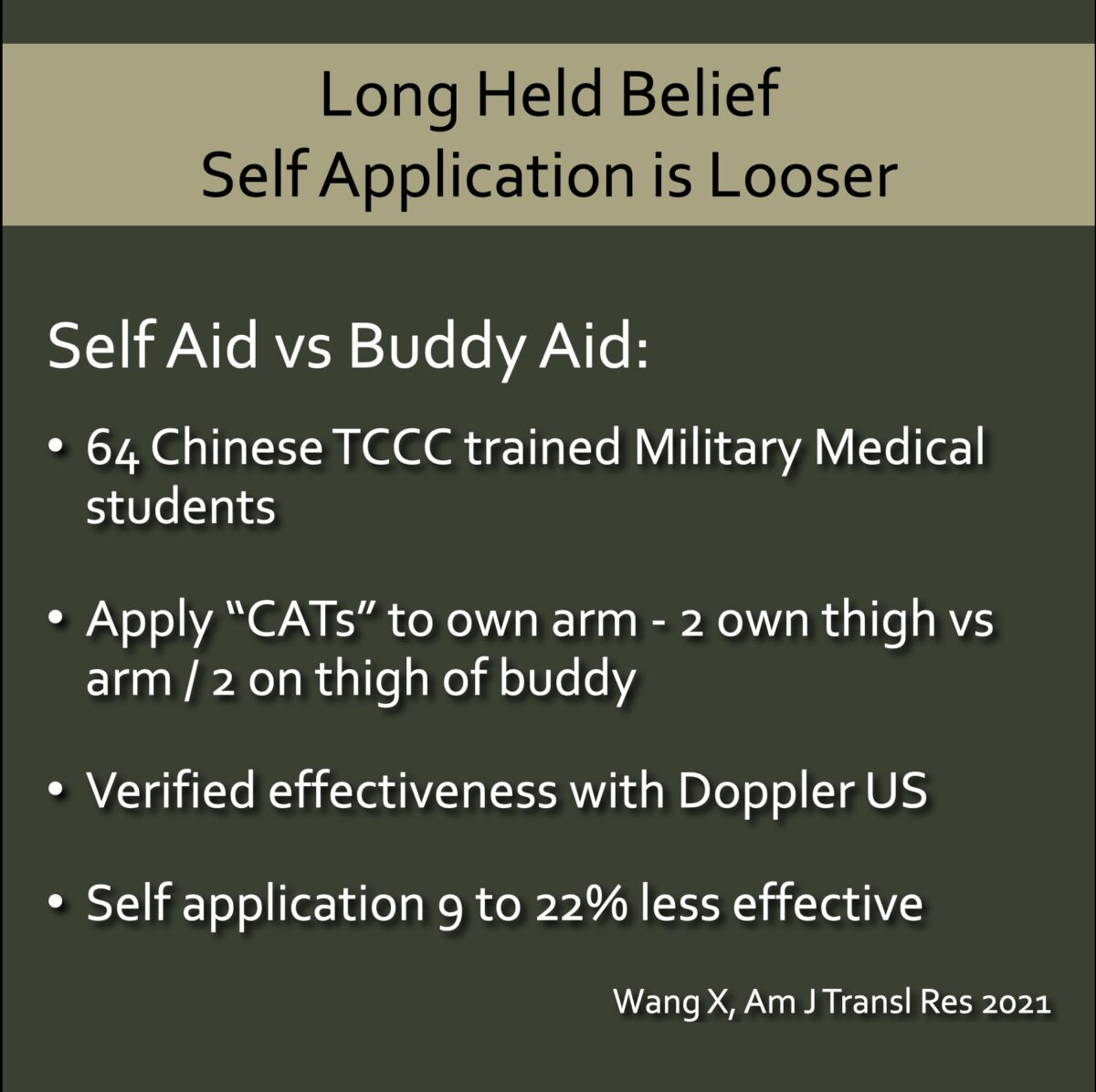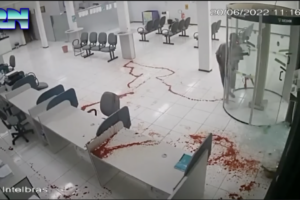
Self-applied tourniquets always looser?
🕖 Reading Time, 4 minutes
There is a long-held belief among military medics that casualties who self-apply their own tourniquets typically put them on looser than they would on someone else. This led to a standard SF medic technique of always giving the windlass of a self-applied tourniquet “another 180” degree twist to ensure it was tight enough when the casualty was received.
Although there are multiple issues with this Chinese Military medical student study, it is the largest I am aware of verifying the effectiveness of a tourniquet with Doppler ultrasound. Sixty-four medical students, TCCC trained (by their report), applied what appears to be a 6th generation CAT tourniquets (based on their drawings). They applied the tourniquets to their own upper arm and placed two tourniquets to their own single thigh (self-aid). They then did the same thing to another student (buddy aid). The study found that self-application was always less effective than buddy application, with a reduction in efficacy ranging anywhere from 9 to 22%. This clearly supports the operational experience of a lot of military medics. \
Caveat: we must be cautious looking too closely at the other results of the study, particularly the described effectiveness rates. We don’t know whether they used legitimate CAT tourniquets, the 6th generation of which ceased manufacture in 2015, or Chinese counterfeit CATS. I suspect the latter, which makes their data not generalizable to those using actual CATS. It also might explain the surprisingly low effectiveness with dual tourniquet application to the thigh, where the average thigh size of the students was 22 inches and the largest 25 inches.
Ultimately, even with possibly counterfeit tourniquets, the study clearly demonstrates that self-applied tourniquets just aren’t as effective, presumably because they were not applied as tightly as a rescuer would apply them to a casualty.
Note:
Wang X, Xia D, Zhou P, Gui L, Wang Y. Comparing the performance of tourniquet application between self-aid and buddy-aid: in ordinary and simulated scenarios. Am J Transl Res. 2021 Jun 15;13(6):6134-6141.




